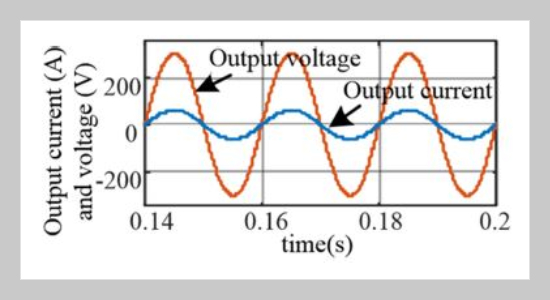Krishna Chaitanya Marri 1, Amarendra Mats2, and Subir Datta2
1Electrical Engineering, GEC, Guntur-52206
2Electrical Engineering, Mizoram University, Aizawl-796004
Received:
March 1, 2022
Accepted:
May 25, 2022
Publication Date:
July 20, 2022
Copyright The Author(s). This is an open access article distributed under the terms of the Creative Commons Attribution License (CC BY 4.0), which permits unrestricted use, distribution, and reproduction in any medium, provided the original author and source are cited.
Download Citation: ||https://doi.org/10.6180/jase.202304_26(4).0004
ABSTRACT
The advanced proposed prognostic state variable method of 1-phase Matrix converter reduces the practical parameter effect of the control model and also enhances the complete performance of the controlling approach. The prognostic current control algorithm is presented in this research to control the 1-phase Matrix converter. The conventional control model parameter is replaced with elliptical appropriate method and also direct fit method to estimate the state parameters. The heftiness and deviation coefficient of time is analyzed with conventional and proposed methods by using MATLAB tool. The proposed method is also verified in terms of its effectiveness of THD comparison.
Keywords:
Single phase Matrix converter, state variable method, AC-AC conversion, Power Electronics
REFERENCES
- [1] N. Takaoka, H. Takahashi, and J.-I. Itoh, (2018) “Isolated Single-Phase Matrix Converter Using Center-Tapped Transformer for Power Decoupling Capability" IEEE Transactions on Industry Applications 54(2): 1523–1531. DOI: 10.1109/TIA.2017.2774760.
- [2] M. Kano, K. Miyazaki, S. Hasebe, and I. Hashimoto, (2000) “Inferential control system of distillation compositions using dynamic Partial Least Squares regression" Journal of Process Control 10(2): 157–166. DOI: 10.1016/S0959-1524(99)00027-X.
- [3] P. Wheeler, J. Rodríguez, J. Clare, L. Empringham, and A. Weinstein, (2002) “Matrix converters: A technology review" IEEE Transactions on Industrial Electronics 49(2): 276–288. DOI: 10.1109/41.993260.
- [4] K. Basu, R. Gupta, S. Nath, G. Castelino, K. Mohapatra, and N. Mohan. “Research in matrix-converter based three-phase power-electronic transformers”. In: cited By 25. 2010, 2799–2803. DOI: 10.1109/IPEC.2010.5543808.
- [5] U. Nasir, A. Costabeber, P. Wheeler, M. Rivera, and J. Clare, (2019) “A three-phase modular isolated matrix converter" IEEE Transactions on Power Electronics 34(12): 11760–11773. DOI: 10.1109/TPEL.2019.2909681.
- [6] K. Vijayakumar and G. Vishnuvarthanan. “An Overview of Single Phase Matrix Converter Applications”. In: cited By 1. 2019. DOI: 10.1109/INCCES47820.2019.9167701.
- [7] Y. Zhou. “A study of the method of increasing matrix converter voltage transfer ratio”. In: cited By 0. 2013, 98–101. DOI: 10.1109/ICMTMA.2013.36.
- [8] C. El-Khoury, H. Kanaan, I. Mougharbel, and K. Al-Haddad. “A comparative study of four bidirectional sparse matrix converter topologies for wind power applications”. In: 2015-June. June. cited By 11. 2015, 2552–2558. DOI: 10.1109/ICIT.2015.7125474.
- [9] C. Klumpner and C. Pitic. “Hybrid matrix converter topologies: An exploration of benefits”. In: cited By 36. 2008, 2–8. DOI: 10.1109/PESC.2008.4591887.
- [10] S. Pipolo, A. Formentini, A. Trentin, P. Zanchetta, M. Calvini, and M. Venturini. “A New Modulation Approach for Matrix Converter”. In: cited By 4. 2019, 1021–1027.
- [11] A. Ammar, H. Kanaan, N. Moubayed, M. Hamouda, and K. Al-Haddad, (2020) “Original Approach Toward Three-Phase Indirect Matrix Converters through Hybrid PWM Modulation and DSP Implementation" IEEE Access 8: 45837–45852. DOI: 10.1109/ACCESS.2020.2977502.
















